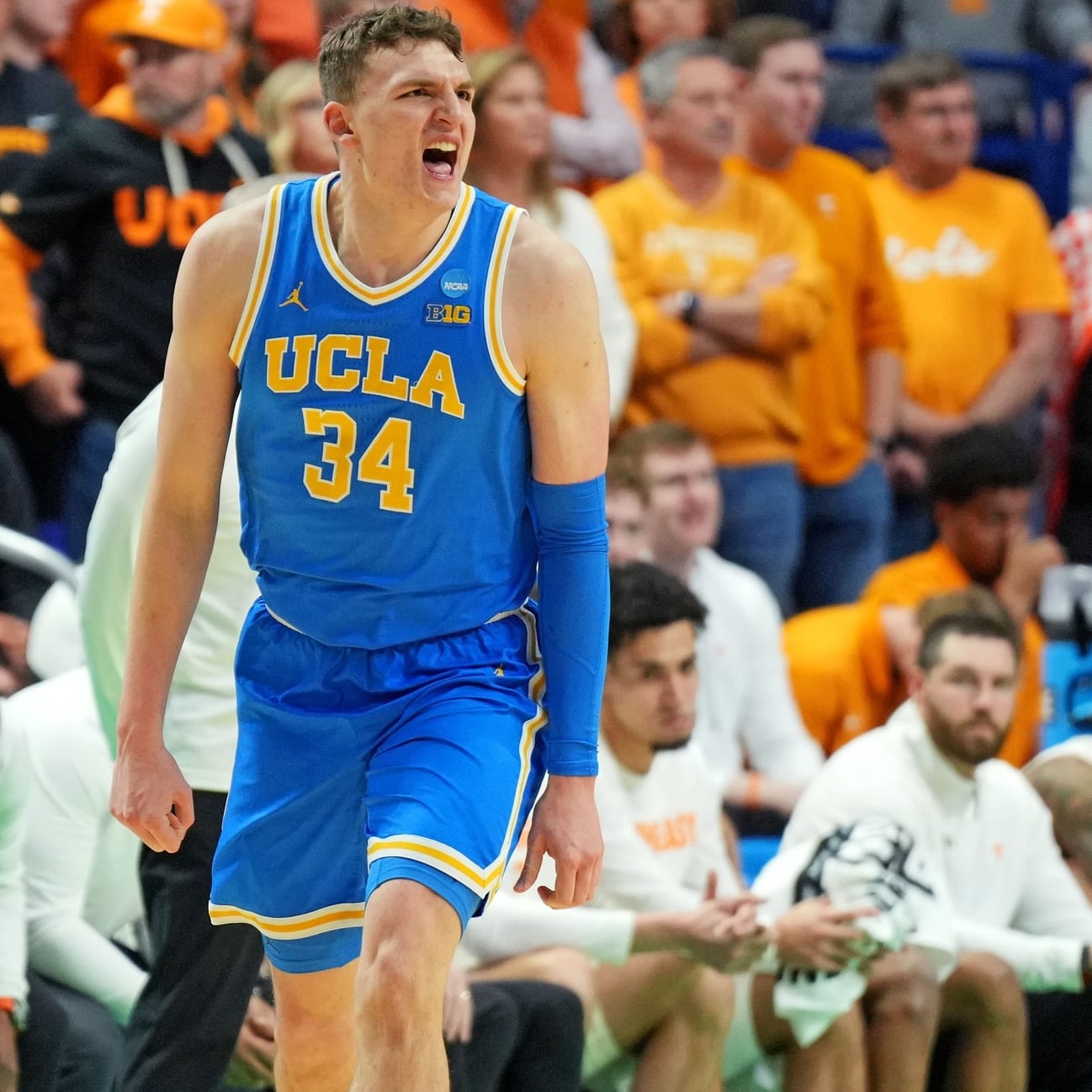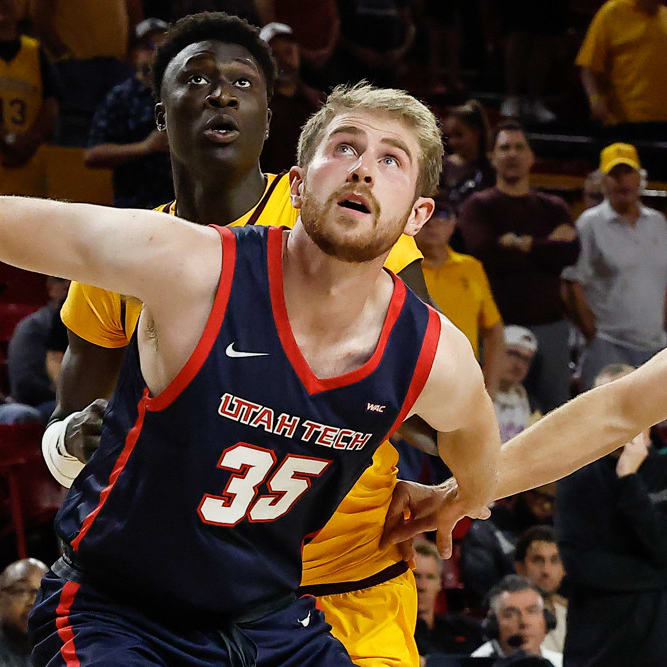Welcome to the Bubble Watch. As promised, the College Hoops Barometer changes course, slightly, as the NCAA Tournament draws closer. In this week's edition, we ditch the player analysis and turn toward teams as a whole. Which teams have helped their stock recently, and which are on the outside looking in?
One caveat is that the bubble is extremely fluid. This week's conference tournaments will play a huge role in determining the fates of several of the squads mentioned below. Likewise, upsets shrink the bubble and make it more difficult for teams to survive. Already Belmont may have stolen a tourney bid, upsetting top-seeded Murray State, 88-87, last Saturday. Murray State may have issues of its own getting into the dance, though, despite going 16-0 in conference play and having not lost a game since November.
Isn't that the beauty of the madness, though? Let's look at how the bubble stands as we march toward Selection Sunday.
UPGRADE
Xavier - The Musketeers are probably going to be dancing, but they would likely be the sixth team in the field from the Big East, so it's not a given. Xavier finished .500 in conference play, and failed to reach the 20-win mark during the regular season. However, their Strength of Schedule (SOS) is 20th in the country, and the Musketeers have an RPI (Ratings Percentage Index) of 39. In other words, the Musketeers had an extremely difficult schedule, yet they did fairly well against that schedule (which, in an extremely simplistic
Welcome to the Bubble Watch. As promised, the College Hoops Barometer changes course, slightly, as the NCAA Tournament draws closer. In this week's edition, we ditch the player analysis and turn toward teams as a whole. Which teams have helped their stock recently, and which are on the outside looking in?
One caveat is that the bubble is extremely fluid. This week's conference tournaments will play a huge role in determining the fates of several of the squads mentioned below. Likewise, upsets shrink the bubble and make it more difficult for teams to survive. Already Belmont may have stolen a tourney bid, upsetting top-seeded Murray State, 88-87, last Saturday. Murray State may have issues of its own getting into the dance, though, despite going 16-0 in conference play and having not lost a game since November.
Isn't that the beauty of the madness, though? Let's look at how the bubble stands as we march toward Selection Sunday.
UPGRADE
Xavier - The Musketeers are probably going to be dancing, but they would likely be the sixth team in the field from the Big East, so it's not a given. Xavier finished .500 in conference play, and failed to reach the 20-win mark during the regular season. However, their Strength of Schedule (SOS) is 20th in the country, and the Musketeers have an RPI (Ratings Percentage Index) of 39. In other words, the Musketeers had an extremely difficult schedule, yet they did fairly well against that schedule (which, in an extremely simplistic way, is what RPI measures). The Bulldogs also destroyed the above-referenced Murray State Racers by 27 points earlier this season. An early season loss to Long Beach State won't help, but Xavier did beat tournament teams in Butler, Providence and Georgetown twice. The strength of the Big East conference makes Xavier more impressive than their resume looks.
Cincinnati - A former Big East member, the Bearcats are looking to join Southern Methodist in the Big Dance from the American Athletic Conference. Despite having a worse overall record than SMU both overall and in conference play, the Bearcats swept the season series with the 'Stangs. Cincy closed the season with five straight wins, while also defeating San Diego State and N.C. State, teams which are both tourney bound. They also beat Temple and Tulsa, conference foes battling for their tournament lives (see below). Add in an RPI of 34, and a 6-4 record against the RPI Top 50, and the Bearcats aren't in much danger of missing out on the tournament.
LSU - On paper, LSU is one of the dangerous teams in the country. The athleticism of this squad is off the charts. The frontcourt of Jordan Mickey and Jarell Martin (the M&M Boys) combines for over 32 points and 18 rebounds per game. Mickey is also the leading shot blocker in the nation. Meanwhile, Tim Quarterman operates as a versatile, big point guard, and Keith Hornsby can shoot from anywhere, as witnessed by his late-game heroics in the season finale against Arkansas. So why is this team still on the bubble? Inconsistency. One night, the Tigers nearly pulled off a colossal upset of No. 1 Kentucky. On another night, March 4 to be exact, the Tigers got blown out by a Tennessee Volunteer squad that will not be making an appearance in the NCAA Tournament. Other losses to subpar opponents include defeats at the hands of Auburn, Missouri, Mississippi State and Clemson. Still, it appears that the Tigers have done enough after going 11-7 in SEC conference play. Wins over Arkansas and West Virginia will help the cause, as will an RPI of 48. In addition, the Tigers were 5-2 against the top 50 teams in terms of RPI. The Tigers could make some noise in the Big Dance. Or they could fall flat and bow out early. Either way, however, the Tigers should be included in the Field of 68.
BYU - Playing in the West Coast Conference, the Cougars do not have the greatest Strength of Schedule, which sits at 73. However, their RPI is in the top-50, and BYU challenged itself in during the non-conference portion of its slate. Even though they lost to tourney-bound Utah, Purdue and Mountain West power San Diego State, all three games were close, including a Double OT loss to the Aztecs. BYU still won 25 games and managed to beat Gonzaga in Spokane before succumbing to the Zags in the WCC title Game. Still, that win over 32-2 Gonzaga will have some clout, and 25 wins is nothing to scoff at either. Things could always change, but as of the writing of this article, the Cougars would be among the last few teams included in the tournament.
CHECK STATUS
Texas/Oklahoma State - These two Big 12 schools have identical 8-10 records in conference play. Right off the bat, that becomes the key issue. Teams with sub-.500 conference records rarely make the final field. However, the committee is presented with a unique situation because of just how deep the Big 12 was this season. The conference was considered by far the most competitive from top to bottom, with perhaps the ACC only being able to stake a claim to truly being a better conference. While the ACC is extremely top-heavy, the Big 12 was strong nearly across the board. Texas and Oklahoma were sixth and seventh in the conference, respectively, yet are both still in play for an at-large berth. Texas has wins over Baylor, West Virginia and Iowa, while Oklahoma State beat Baylor twice, while also toppling Kansas. The difference between these two schools? Oklahoma State swept the season series against the Longhorns. Texas was also 3-11 against the RPI Top 50, while Oklahoma State was 6-8. As a result, despite extremely similar records on the surface, Oklahoma State has the head-to-head edge.
Temple - The Owls have a big win on their resume, a 77-52 rout of the Kansas Jayhawks in late December. At 23-9, including 13-5 in conference play, it would seem as though Temple should be a lock, right. Well, there isn't a big win to their credit since that time, unless Cincinnati, another bubble team as mentioned above, is included. The rest of the non-conference slate was particularly gruesome, as the Owls lost to a rather poor Saint Joseph's squad, and a mediocre UNLV team. They challenged themselves against Duke and Villanova, but were waxed by 20-plus points in each game. The Strength of Schedule is on the low end, but the RPI (31) is fine. In sum, Temple won't be helped by the mediocrity of the American Athletic Conference this season, along with those rough non-conference losses. It will come down to the wire for the Owls on Selection Sunday.
Purdue - A down year in the Big Ten could hurt the Boilermakers, who were 12-6 in conference play. Struggles in non-conference outings also pull the Boilermakers down to this level, with losses to Gardner-Webb, Vanderbilt and North Florida. However, it is worth mentioning that the UNF Ospreys did clinch their first NCAA Tournament berth this season out of the Atlantic Sun conference. The Strength of Schedule and RPI are not in the top-50 for Purdue, and a late-season loss to Minnesota looks particularly ugly. However, they did beat fellow bubble squads Indiana and Illinois (both discussed below) in the last five games of the year. It could go either way for Purdue depending on the Big 12 Tournament.
UCLA - Speaking of underwhelming years for power conferences, the Pac-12 could be looking at just three teams in March Madness if UCLA gets excluded. The Bruins played an extremely difficult non-conference slate, and got waxed by Kentucky, Gonzaga, UNC and Oklahoma. A loss to Alabama, a mediocre SEC squad, will also be scrutinized. The biggest win for the Bruins came over Utah in January, and UCLA also defeated Oregon, a tournament squad, in February. However, the lack of a true signature win could come back to haunt the Bruins. Their resume simply lacks the pizazz of some of the more worthy at-large squads, though the Bruins could be rewarded for having very few, if any bad losses.
DOWNGRADE
Miami - The Canes are likely on the outside looking in, as Miami has stumbled at times in both non-conference and ACC play. As mentioned, the ACC was stout this season, and Miami would likely be the seventh team from the conference if the Hurricanes somehow managed to squeak in. As opposed to UCLA's bland resume, the Canes have had a wild ride this season. Miami started the season 8-0, with wins over Florida and Illinois. However, those wins turned out to not be as impressive as initially thought. Then Miami lost to Green Bay and Eastern Kentucky as the non-conference schedule played out. Just as it seemed it was heading back to reality, Miami beat the Duke Blue Devils on the road at Cameron Indoor Arena. However, Miami finished the ACC at 10-8, with losses to FSU, Wake Forest and Georgia Tech, the latter two being particularly horrid. In all likelihood, Miami will just miss out on the Big Dance because the Canes could not pull out the win over Virginia in Double OT in early January. Turning that L into a W would likely have swung The U into the fray.
Indiana/Illinois - It is unlikely that the committee takes Purdue, Indiana and Illinois into the final field. Purdue has a slight edge over the Hoosiers and Illini, as the latter two schools are 9-9 in the Big Ten. Indiana has better resume in terms of SOS, as the Illini really did not schedule difficult opponents outside of Miami during its non-conference run. Meanwhile, Indiana beat Butler and SMU, while also playing Louisville. However, the RPIs are almost identical. Illinois has the excuse of having missed its star player, Rayvonte Rice, for a large chunk of the season. Indiana has stumbled down the stretch, losing four of the last five conference games heading into the Big Ten tourney. Once again, the head-to-head matchup could come into play. The Hoosiers beat the Illini in Illinois in mid-January, though Rice did not play in that contest. If a choice had to be made between the two schools, the edge would probably go to Indiana due to the Strength of Schedule as well as the head-to-head win. However, the teams look to be neck-and-neck, and it wouldn't be outlandish if both schools get cut come Selection Sunday.
Texas A&M - The Aggies looked like a virtual lock just a couple short weeks ago, before losing three of their last four games down the stretch. A&M does got to 20 wins, but a weak non-conference slate could be its death knell. The Aggies possess a Strength of Schedule of just 87, placing them near the bottom of the power conference schools. The biggest non-conference win came against Arizona State, a unit that will be watching the NCAA Tournament on TV. In fact, A&M did not beat a ranked opponent all season. Additionally, the Aggies were 2-6 against the RPI Top 50 schools. On the plus side? The Aggies were 11-7 in the SEC without a bad loss. In fact, Texas A&M does not have a bad loss for the entire campaign. The Aggies didn't get too high this season, but they didn't stoop too low either. Will consistency be rewarded, or will the Aggies be punished for the lack of a signature win and the failure to challenge themselves? Stay tuned to find out.
Tulsa/Old Dominion - These two have been grouped together because of their status as essentially mid-majors. Tulsa is in the same conference as Temple and Cincinnati, two squads with better chances at making the tourney. The Golden Hurricane, however, have a better conference record than either school, finishing the regular season 14-4 in the American Athletic Conference. The Strength of Schedule comes into play, though, as the Golden Hurricane did not break the top-100 in terms of the raw data. A loss to Southeast Oklahoma State, a team nicknamed the "Savage Storm," puts a huge question mark on Tulsa's resume. A loss to Oral Roberts isn't very helpful either. Old Dominion, meanwhile, tried to schedule difficult non-conference games, and even succeeded in knocking off VCU and LSU. Likewise, the Monarchs were 6-2 against the RPI Top 100. However, playing in Conference-USA dragged down the Monarchs' SOS overall. If the Monarchs cannot topple Louisiana Tech, the No. 1 seed in C-USA, and gain the automatic berth, that Strength of Schedule may prove the difference between the NCAAs and the NIT.





































